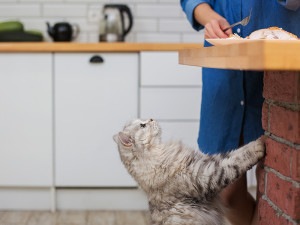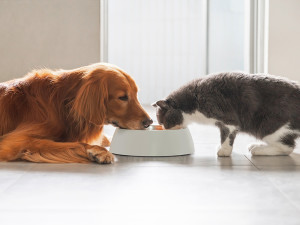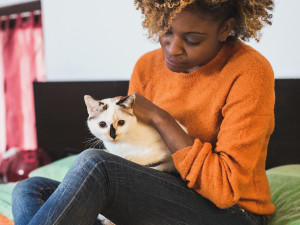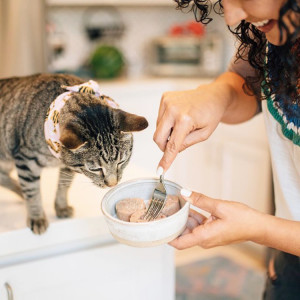Is Homemade Cat Food Better Than Kibble and Canned?
Integrative veterinarian Dr. Ruth Roberts on what ingredients to include when considering a home-cooked diet for your cat.
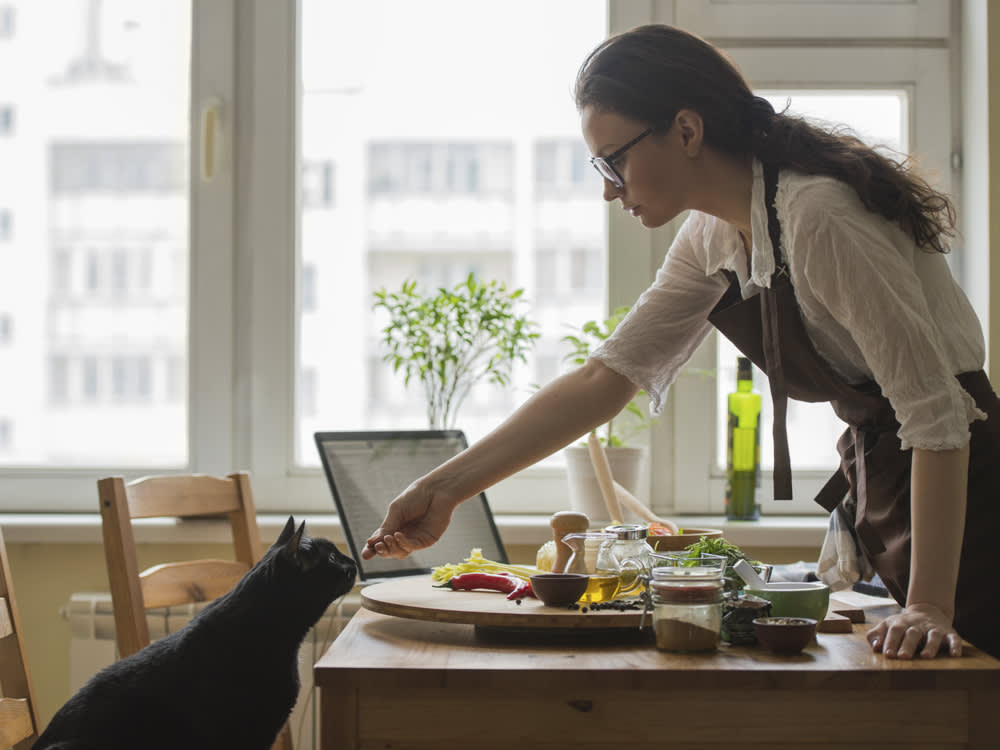
share article
Does your cat give you the side eye when you sit down to savor a home-cooked meal...then pour them a bowl of bagged cat food? Oh, the hypocrisy. Sure, commercial cat foods are safe for your cat and brands stamped with an Association of American Feed Control Officials (AAFCO) seal provide a complete and balanced diet — but that doesn’t mean your cat wants to spend their nine lives eating the same triangle-shaped rations.
“Bagged foods are so high in carbohydrates,” says integrative veterinarian Dr. Ruth Roberts, a holistic pet health coach and creator of The Original Crockpot Dietopens in a new tab. “There is also an alphabet of chemicals [on the label] that makes [some pet parents] want another option.” Indeed, commercial cat foods, while nutritionally balanced, are also formulated with often unfamiliar ingredients (what are mixed-tocopherols and powdered cellulose anyway?) and often contain preservatives and dyes. DIY cat food allows you to cook with fresh proteins and veggies (you can also source organic and local ingredients if that’s important to you).
A home-cooked feline feast is about more than knowing what your cat is consuming, though. It can also be a strategy to address health issues. Dr. Roberts notes that pet parents often seek out fresh, whole-food diets when their cats are diagnosed with chronic diseases, from irritable bowel disease to canceropens in a new tab. You might be able to whip up your favorite recipes without much thought, but cooking for your cat is a little more complicated.
Getting the Balance Right
Cats are “obligate carnivores” which means their diets must contain animal proteins, for starters. A nutritious diet for cats should include the right balance of nutrients, including protein from meat or fish, amino acids, healthy fats, vitaminsopens in a new tab, minerals, and wateropens in a new tab. The sources of these ingredients range from beef and salmon to vegetables, avocado oil, and supplements.
“You need to make sure you’re using a recipe that allows you to create a complete and balanced diet,” Dr. Roberts says. The ingredients you leave out are equally important. Certain foods — including raisins, grapes, onions, garlicopens in a new tab, tomatoes, nuts, and the artificial sweetener xylitol — are toxic to cats. She also cautions against adding too much corn, rice, soy, or other simple carbohydrates to homemade cat food because they are harder to digest and have a negative impact on gut health. Work with a veterinarian or nutritionist to develop a recipe for your cat’s specific health needs. With a little prep and the right ingredients, Dr. Roberts believes, “[The cost of] cooking for cats is comparable to purchasing high-end cat foods.”
Cook with Caution
Like other fresh, homemade foods, DIY cat foods have a limited shelf life. In the refrigerator, a batch lasts about five days. Dr. Roberts suggests cooking in large batches and separating the homemade food into smaller portions, storing the rest in the freezer and thawing as needed.
Quitting kibble is not as simple as tossing it out. Dr. Roberts advises against making an abrupt switch. Cats are often too finicky to accept a new food, and the transition period reduces the risk of stomach issues from switching them too fast. Aim to transition your cat to homemade cat food in about two weeks to give them time to adjust. Start by mixing 25 percent of the homemade cat food with their kibble, then adding a higher percentage of homemade cat food and reducing the amount of kibble each week until your cat transitions off of their existing diet.
Dr. Roberts acknowledges that a DIY diet is not for all cat parents. She points to the ever-increasing number of commercially available fresh, whole-food diets for cats as an alternative. Check the label to make sure the diet isn’t too carb-heavy (if the ingredient label lists peas, beans, potatoes, or corn as the first ingredients, it’s a red flag that it’s a high carb diet).
That said, transitioning to a homemade diet can do wonders for some cats. According to Dr. Roberts, pet parents who make the switch often notice their cats have more energy, less poop, glossier coats, and even improved values in their blood work.
Disclaimer alert: This article is here to share information. But, much like pineapple on pizza, the topic may be controversial. Meaning, not all vets or pet professionals agree. Because every pet is a unique weirdo with specific needs. So, don’t take this as fact or medical advice. Talk things over with your vet when making decisions, and use your best judgment (about both your pet’s health and pizza toppings).
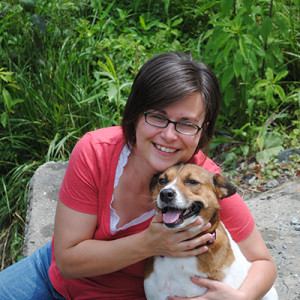
Jodi Helmer
Jodi Helmer is a North Carolina-based freelance writer who shares her home with an embarrassing number of rescue dogs and relies on four feral cats to patrol the barn. When she isn’t refilling food and water dishes, Jodi writes about animals for Scientific American, Sierra, WebMD, AKC Family Dog, Living the Country Life, and Out Here.
Related articles
![Hand holding food bowl peeks into frame as a cat looks up expectantly]() opens in a new tab
opens in a new tabThe Ultimate Puzzle: Picking the Right Cat Food
Four veterinary nutritionists pick apart the claims so that you can choose the right food for your kitty.
![Close up view of a person's hand feeding a gray cat with food]() opens in a new tab
opens in a new tabDoes Your Cat Really Need to Go Grain-Free?
You’ve got questions. Dr. Bruce Kornreich, director of the Cornell Feline Health Center, has answers.
![Person with short hair putting water bowl on floor for cat]() opens in a new tab
opens in a new tabHow to Get a Cat to Drink Water
Their desert-dwelling roots might resist hydration, but these tricks can help.
![A dog and a cat eating from the same food dish.]() opens in a new tab
opens in a new tabHelp Your Chonky Pet Lose Weight
This National Pet Obesity Awareness Day, here are pro tips to help make sure your pet isn’t packing on too many pounds.
![Woman petting her cat]() opens in a new tab
opens in a new tabDon’t Come For Us, But Is Your Cat Overweight?
We love a chonky cat, but here’s what you should know.
![Woman feeding her cat freeze dried raw food.]() opens in a new tab
opens in a new tabEverything You Need to Know About Freeze-Dried Cat Food
This diet could be just right for your cat. But keep these things in mind before you make the switch.
